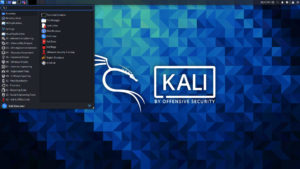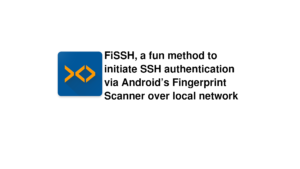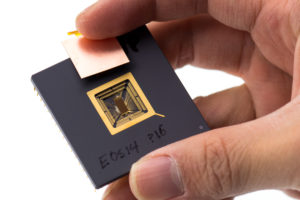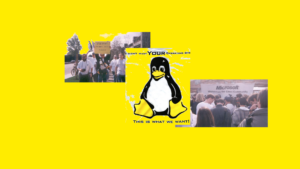Smartphones are everywhere and are being used by a large number of people. Smartphones actually made its debut in 1992, It was called the Simon Personal Communicator, and it was created by IBM. The IBM Simon was the first phone with a touchscreen, it was referred as the first “smart-phone,” though the term was not yet coined. A few competitors came out in the early ’90s, but most mobile devices with touchscreens were more like Personal digital assistant.
Mobile content consumption is growing explosively worldwide. Mobile device users continue demanding increased written, audio, video and multimedia content. Most of the people prefer smartphones than desktop, the consumption rate of smartphones is at its peak. Nearly every people as a smartphone nowadays. In India, a smart-phone could be the only point of Internet access in a family. The overall specifications of modern day smart-phones gets updated every quarter. The popular phone you bought last year is probably updated twice already by your OEM.
Dominant or Dominating?
Mobiles have become the medium of choice for media consumption, with an anytime, anywhere accessibility in vernacular languages. They get used frequently throughout the day for a variety of reasons. Smartphones have become an indispensable part of today’s society. It is hard to imagine life without them. Nearly everyone owns one because of the convenience and the wide range of functions they offer. Companies do understand the market and leave no room for errors and constantly update to gain more market share. Stratum of competition among OEMs and level of after-sales quality has changed over the period of last decade.
Fifth-generation technology, or 5G, which as already marked its presence this year itself, will improve download speeds, meaning that videos will be easier to watch via smartphone even in developing countries. You might not hit the optimal or ideal speed, but improvement are inevitable nonetheless.
The launch 4G-only network in India called Jio by Reliance, has led to an enormous growth in the number of smartphone users in India. There is indeed a need for speed.
In today’s market some OEMs are coming up with unique features instead of releasing a latest and greatest. With the help of advanced AI and computational photography tech-giants like Google and Apple have continued to startle their consumers and earned fans over the years.
The next big development is ‘personalized’ news, a term mostly used by e-commerce companies that cater to consumers based on their search history. Along with this, cognitive technologies like Artificial intelligence (AI), Machine Learning and Natural language processing (NLP) are also disrupting the mobile content consumption space.
Smartphones are most used Internet devices today
According to a report released in June by researcher ComScore, the majority of Internet traffic now comes from mobile devices rather than desktops, which long served as the dominant online portal. And with search engines and digitally managed contact lists just a touch away, analysts say smartphones are affecting how the brain processes information. It’s a huge moment for the web overall, this means going forward, companies that haven’t yet decided to focus on a mobile-first approach to their internet services and web properties, as the trend line is in favour of smartphone.
The IDC data declared on Jan 2020, shows that Android leads by 86% share in smartphone market, which shows its dominance over other platforms in the industry. According to StatCounter new data, Android is supposed to be the most used OS to access Internet, by leaving Windows behind, which is quite a achievement. It is undeniable fact that we live in a world of Android with most people using Internet on it.
The technology phrase is changing every year. More people than ever before are online and ways that people are accessing the internet all over the world as also been changed. There are many companies which offers account separately for moblie devices such as Netflix, Spotify or plans of VPN. However this isn’t the only way the digital world is changing. Due to high tech based devices, the desktop computer is no longer the primary way people access the internet. Instead they use their smartphones as the primary source of Internet.
With the advent of 3G/4G, consumption of data has increased many fold. As Fifth generation technology or 5G is deployed to consumers, we will see more mobile traffic than ever. Streaming services like Youtube, Netflix, Amazon Prime etc had to cap their quality owing to immense traffic during pandemic and lockdown situation. Never before in this century has a communications medium raised the information and entertainment bar like this.
Governance, Administration and Mobile Apps
“I am a great supporter of creativity and freedom but there are also social obligations. But the digital world has to be responsible, accountable and most importantly sensitive. For the sake of earning money, is it right to show what we are showing – this question has to be asked,” the minister said at an IAMAI event.
Governments around the world have rolled out several dozen virus-tracing apps this year, these kind of apps requires your personal data, so Government should be more concerned regarding the privacy. But in fact, the vast majority of virus-tracing apps used by Governments lack adequate security and “are easy for hackers” to attack, so they constantly work to solve the app issues. During COVID-19 pandemic, representatives from Google and Apple laid out their biggest challenge, getting people comfortable enough to actually use the technology. The whole project a mission that two of the world’s largest tech companies teamed up, would fail if they couldn’t convince enough people to sign up.

Earlier, the government has not only restricted the use of Zoom for its own video meetings, but also issued an advisory which confirmed that Zoom video chats were not secure, for personal or professional use. The Government of India’s Cyber Coordination Center, or CyCord, and the Indian Computer Emergency Response Team (CERT-in) have issued advisories. Many companies including NASA had banned Zoom, as it’s Privacy was not safe and secured.
In India, mParivahan developed by NIC, this app can be used to easily access important documents like driving license, vehicle registration certificate, insurance validity among other things. This app is used to improve the quality of service delivery to the citizen and the quality of work environment of the RTOs. Motorists can produce digital documents. Digital documents do not mean scanned copy or a photo of DL, RC or insurance. They have to be stored on DigiLocker or mParivahan app,” the official said. Government are trying to issues faced by people. The one key feature that is missing in the app is the ability to get challan notifications or paying them right within the app.
One other realm is citizen’s communications and grievances. A lot of governments across the globe have already developed Tand deployed a few administrative functionalities using a concept of e-Citizens via smart-phone apps to deliver good governance to the remotest corner of their nation.
Indispensable part of our life
People are spending more and more time in front of digital screens despite the fact that desktop use has gone down the tubes. Still, people are glued to their screens practically all day and night, whether on their way to work, watching TV, or any other time thanks to the prevalence of smartphones and tablets. Humans have become dependent on the Internet and today access to Internet is a fundamental human right in many countries including India. Downtime of Internet services can stifle a lot of business, commercial and every day transactions in real life. People use smartphones almost by default as people are programmed to take the easy option wherever possible, to conserve mental and physical energy. The question we ought to ask ourselves is whether we have exceeded the limits of our reliance on cellphones. The reactions when people lose their mobile perhaps tell it all. In a lot of cases, especially for people who use cloud services a lot, a smart-phone tells everything about your life than you can remember.
Tech is neutral, it is neither good or bad. It is just a tool at your disposal. In general, more useful things are being developed and designed every day. But you cannot shun the fact that negative or dark side does not exist. From the technology standpoint, the smartphone combined all of our needs into one. So we’re dependent on it because it’s where all of our contacts, songs, pictures, credit card information, maps and directions and many more are stored. It is your ecosystem. At times, users cannot even switch from one digital ecosystem to another. For instance, you will find people who would never switch from an iPhone to OnePlus devices with great specs due to ecosystem. They just get so used to one over a period of time that it becomes a part of their life.
Smartphones are a must in modern society. Just by a swipe, everything from banking services to online shopping to payment of bills are done right in span of secs. You can listen to music and also make online friends, learn things, have fun and what not. So, why not use them with care? It is the future even if we ignore it today just like any other innovation including basic electricity at your home.
Conclusion
In its journey, humans have managed to find a telecommunication device that gives them liberty to reach their loved ones without being constrained by space and time. The development of these mobile devices or smart-phones is a continuous process, it all began with basic features like calling, texting, playing simple games when bored. Today’s mobile phones exceed the expectations of most people. They have gotten more powerful than your desktop computers were a couple of years ago. All is not well, like any other new substance, smart-phone abuse and addiction is matter of concern. A good number of teenage users are getting addicted to their smart-phones for instance a game called PUBG’s addiction in India has been in news recently. It is not totally their fault but who is to blame? Smart-phone giants or AI or their parents? Probably every one. It would require studies conducted at universities to understand how smart-phones have affected our day-to-day life during last few decades. It is just the beginning, a lot of improvements are yet to be showcased and when that happens, the craze of smart-phones and its penetration in human life will see unprecedented growth. It is not stopping any time soon.









